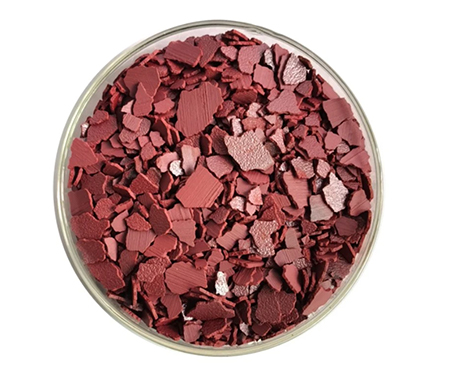Warning: Undefined array key "title" in /home/www/wwwroot/HTML/www.exportstart.com/wp-content/themes/1198/header.php on line 6
Warning: Undefined array key "file" in /home/www/wwwroot/HTML/www.exportstart.com/wp-content/themes/1198/header.php on line 7
Warning: Undefined array key "title" in /home/www/wwwroot/HTML/www.exportstart.com/wp-content/themes/1198/header.php on line 7
Warning: Undefined array key "title" in /home/www/wwwroot/HTML/www.exportstart.com/wp-content/themes/1198/header.php on line 7
- Afrikaans
- Albanian
- Amharic
- Arabic
- Armenian
- Azerbaijani
- Basque
- Belarusian
- Bengali
- Bosnian
- Bulgarian
- Catalan
- Cebuano
- China
- China (Taiwan)
- Corsican
- Croatian
- Czech
- Danish
- Dutch
- English
- Esperanto
- Estonian
- Finnish
- French
- Frisian
- Galician
- Georgian
- German
- Greek
- Gujarati
- Haitian Creole
- hausa
- hawaiian
- Hebrew
- Hindi
- Miao
- Hungarian
- Icelandic
- igbo
- Indonesian
- irish
- Italian
- Japanese
- Javanese
- Kannada
- kazakh
- Khmer
- Rwandese
- Korean
- Kurdish
- Kyrgyz
- Lao
- Latin
- Latvian
- Lithuanian
- Luxembourgish
- Macedonian
- Malgashi
- Malay
- Malayalam
- Maltese
- Maori
- Marathi
- Mongolian
- Myanmar
- Nepali
- Norwegian
- Norwegian
- Occitan
- Pashto
- Persian
- Polish
- Portuguese
- Punjabi
- Romanian
- Russian
- Samoan
- Scottish Gaelic
- Serbian
- Sesotho
- Shona
- Sindhi
- Sinhala
- Slovak
- Slovenian
- Somali
- Spanish
- Sundanese
- Swahili
- Swedish
- Tagalog
- Tajik
- Tamil
- Tatar
- Telugu
- Thai
- Turkish
- Turkmen
- Ukrainian
- Urdu
- Uighur
- Uzbek
- Vietnamese
- Welsh
- Bantu
- Yiddish
- Yoruba
- Zulu
Sep . 07, 2024 08:48 Back to list
Exploring the Antibacterial Properties of Petroleum Jelly
Exploring the Antibacterial Properties of Petroleum Jelly
Petroleum jelly, a semi-solid mixture derived from petroleum, has gained popularity over the years for its diverse applications, particularly in the cosmetic and medical fields. Widely known for its ability to moisturize and protect the skin, what is often overlooked is its potential antibacterial properties. This article delves into the antibacterial characteristics of petroleum jelly and explores its possible implications in healthcare and personal hygiene.
Petroleum jelly, also known as mineral jelly, is composed primarily of hydrocarbons, which impart its unique texture and properties. The product functions as an occlusive agent, meaning it forms a protective barrier on the skin that can help retain moisture and prevent the entry of external contaminants. This barrier property can provide an advantageous effect in preventing infections in minor cuts and abrasions.
Recent studies have investigated the antibacterial capabilities of petroleum jelly, especially when combined with various natural antibacterial agents. Research has suggested that when combined with components such as tea tree oil or aloe vera, petroleum jelly can enhance the antimicrobial effects against common skin pathogens, including Staphylococcus aureus and Escherichia coli. The combination of these substances not only boosts the antibacterial effectiveness but also promotes healing, making it a viable option for first-aid treatments.
'exploring the antibacterial properties of petroleum jelly for ...'

One of the significant benefits of petroleum jelly is its non-irritating nature. Unlike some topical antibiotics that may cause skin irritation or allergic reactions, petroleum jelly is generally well-tolerated by most individuals. This characteristic makes it an ideal carrier for other medicinal compounds, allowing for safer application while maintaining effectiveness. For individuals with sensitive skin or those who suffer from allergic reactions to certain antibacterial creams, petroleum jelly may offer a gentle alternative.
Furthermore, the use of petroleum jelly in wound care has been exemplified by its widespread recommendation by healthcare professionals. By applying petroleum jelly to a clean wound and covering it with a sterile bandage, the risk of bacterial contamination can be minimized, promoting an optimal healing environment. This practice is particularly beneficial for minor injuries, as it creates a moist environment that can accelerate tissue regeneration and reduce the likelihood of scarring.
Despite its advantages, it is essential to consider the limitations of petroleum jelly. While it can create a barrier against bacteria, it does not possess inherent antibacterial properties in its pure form. Therefore, relying solely on petroleum jelly without complementary treatments for severe wounds or infections is not advisable. Healthcare providers encourage individuals to seek medical advice for significant injuries or infections that necessitate advanced care.
In conclusion, petroleum jelly holds promise as a protective agent with potential antibacterial properties, particularly when used in combination with other natural antimicrobial agents. Its ability to form a barrier, coupled with its non-irritating nature, makes it a valuable addition to wound care and personal hygiene products. As further research unfolds, the exploration of petroleum jelly’s antibacterial capabilities could lead to novel applications in both healthcare and cosmetic formulations, ultimately benefiting a wide range of consumers seeking safe and effective solutions for skin health.
Latest news
-
Certifications for Vegetarian and Xanthan Gum Vegetarian
NewsJun.17,2025
-
Sustainability Trends Reshaping the SLES N70 Market
NewsJun.17,2025
-
Propylene Glycol Use in Vaccines: Balancing Function and Perception
NewsJun.17,2025
-
Petroleum Jelly in Skincare: Balancing Benefits and Backlash
NewsJun.17,2025
-
Energy Price Volatility and Ripple Effect on Caprolactam Markets
NewsJun.17,2025
-
Spectroscopic Techniques for Adipic Acid Molecular Weight
NewsJun.17,2025

